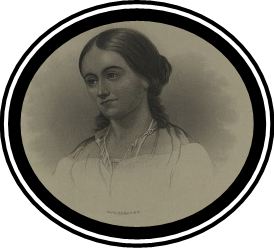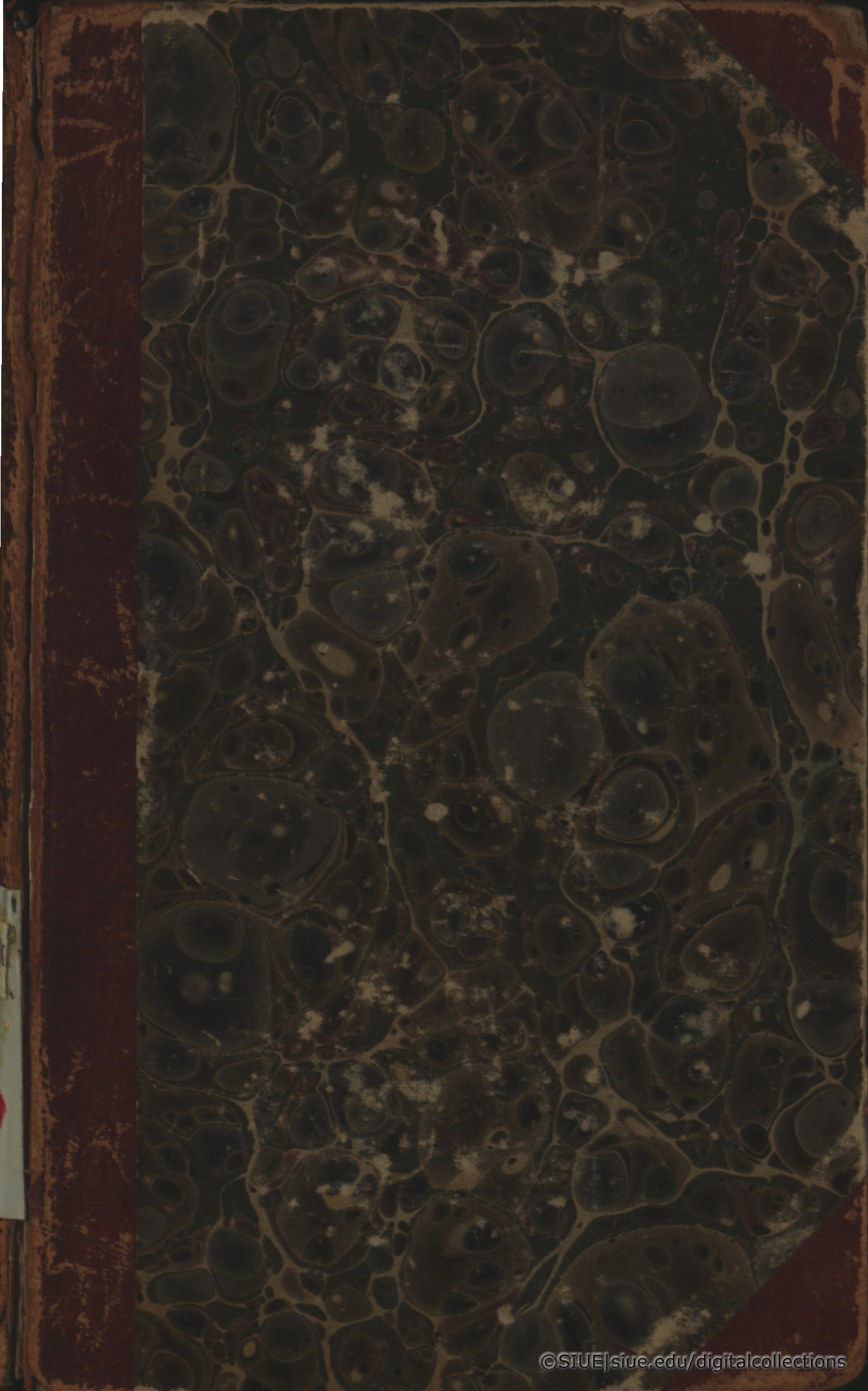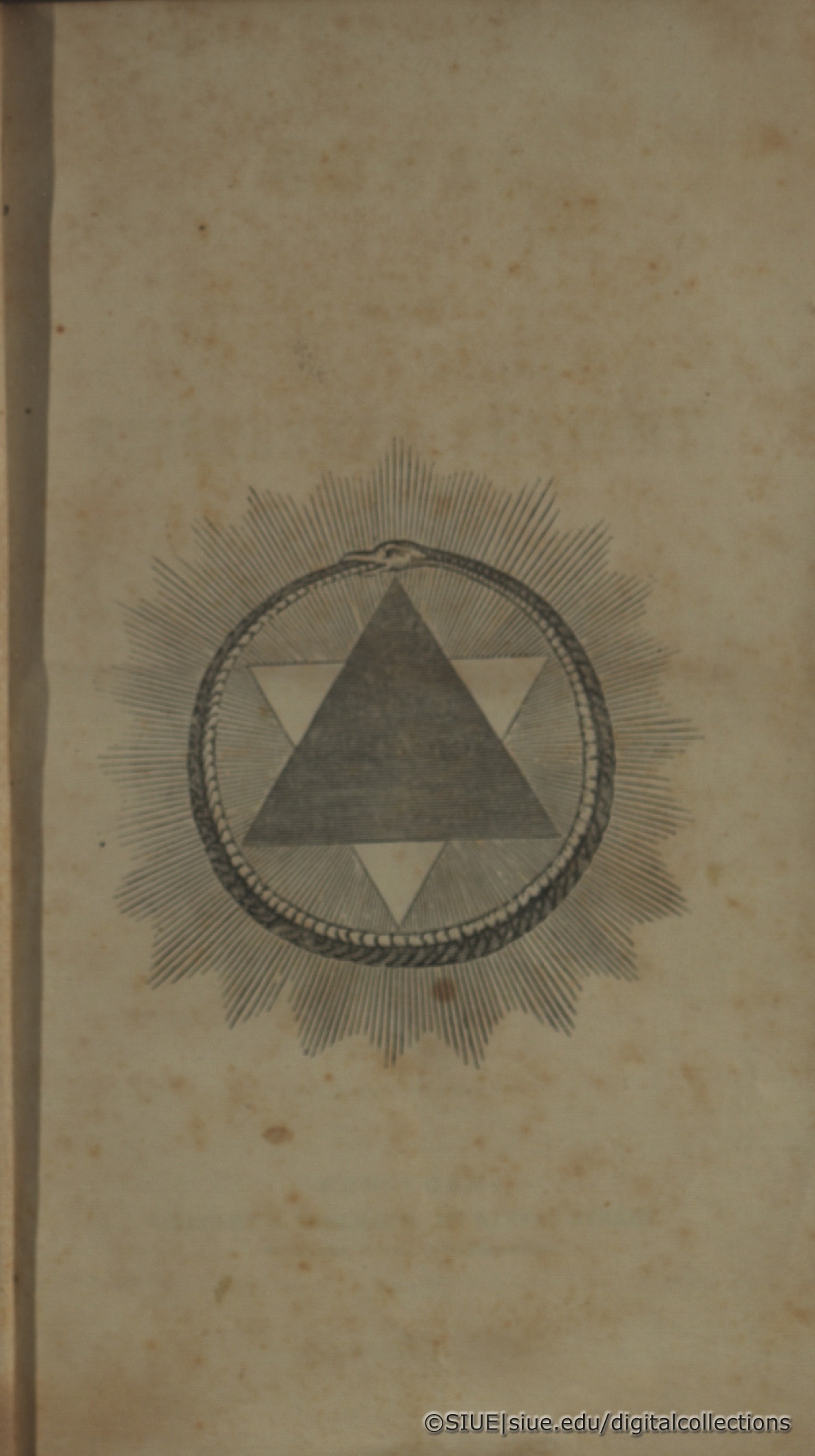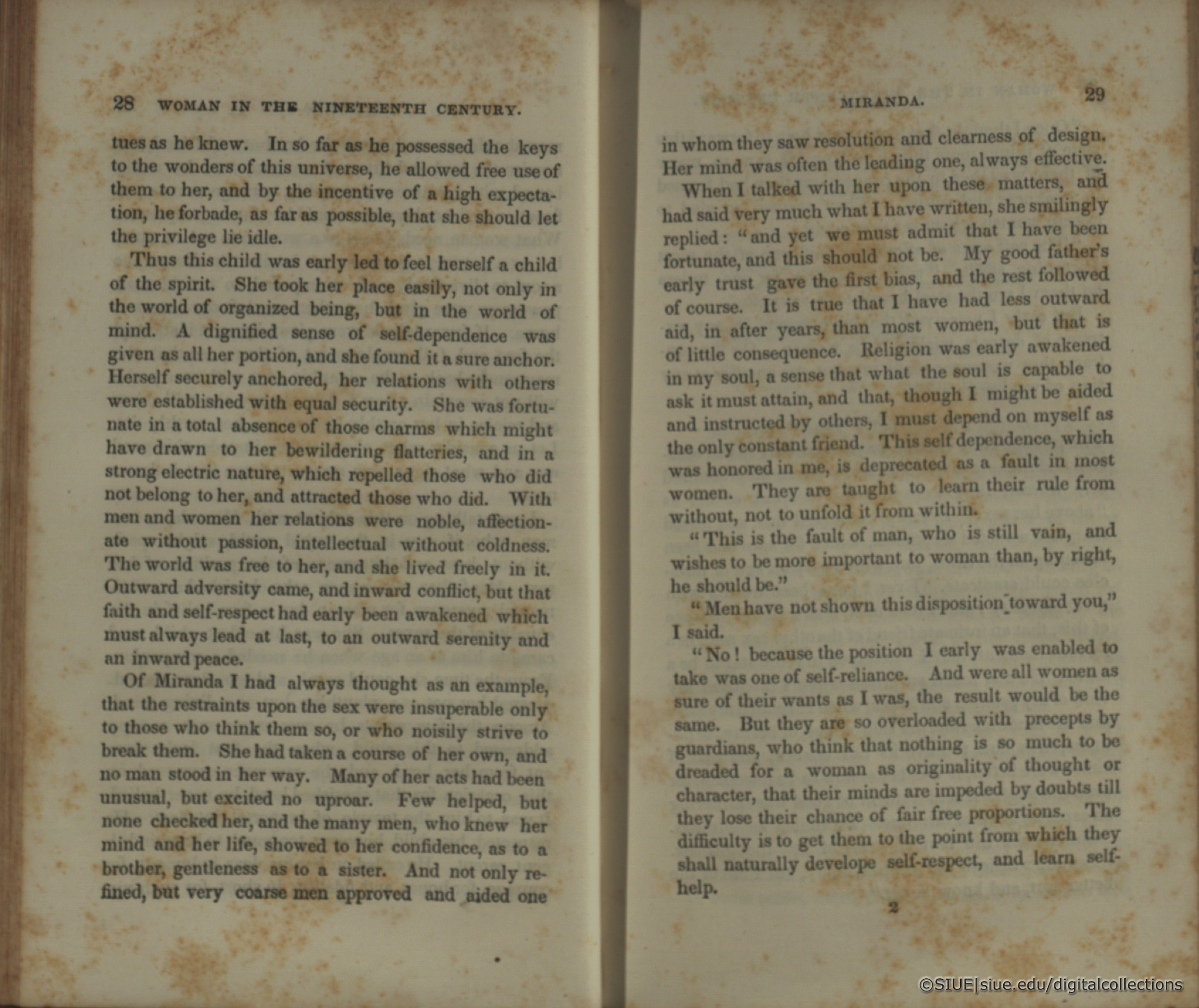Book 4 of 8:
Woman in the nineteenth century.
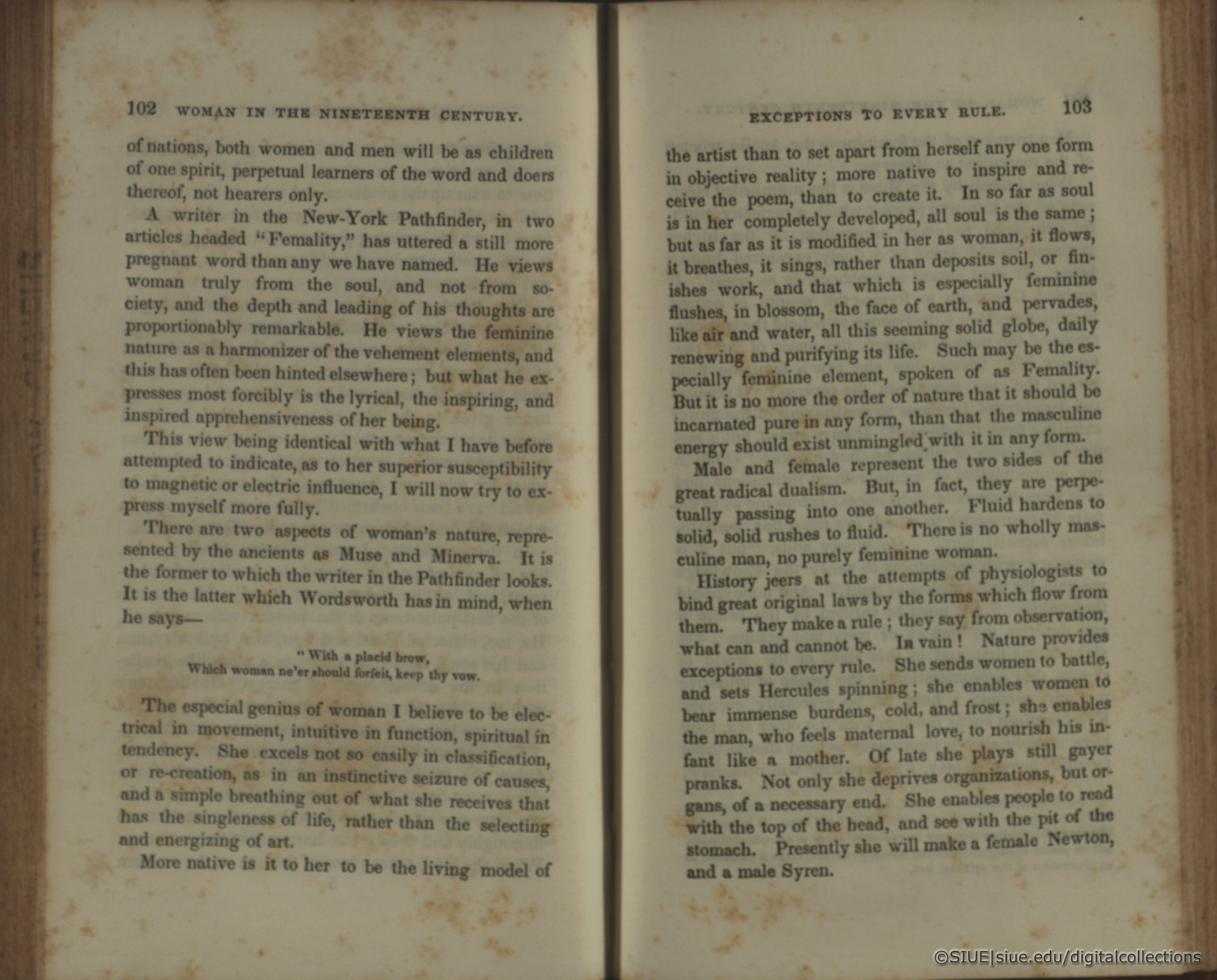
By S. Margaret Fuller.
New York: Greeley & McElrath, 160 Nassau-Street, 1845 (W. Osborn, Printer, 88 William-street).
201 pages, 20 cm (12mo) -- Signatures: pi2 1-812 92 -- Leather spine and cornerpieces with marbled cover boards. -- Lovejoy Library catalog record.
Woman in the Nineteenth Century is considered "a classic feminist polemic" (Murray 224) and "an intellectual foundation for feminism" (Thompson 54). In it, Fuller seeks to develop the humanity of women independent from men. She asserts that women are a combination of masculine (personified as "Minerva") and feminine ("Muse") potentialities (p. 102-103). In another section, Fuller describes a woman named Miranda who serves as Fuller's alter ego (p. 28-29). Like Fuller, Miranda was educated by her father to be intellectually independent.
In 1837, Fuller became the first woman admitted to the Transcendentalist Club in Boston. She formed the "Conversations Club" which challenged women to Transcendentalist-style self-reliance by discussing philosophical topics. In 1844, Horace Greeley invited Fuller to write for the New-York Daily Tribune. She accepted, and in 1845 published Woman in the Nineteenth Century, her second book. She traveled to Europe as a Tribune correspondent and became a supporter of the Italian revolution. She fell in love with Giovanni Angelo Ossoli and married him after their child was born. The family drowned in 1850 in a shipwreck on the way to the United States.
The frontispiece of Woman in the Nineteenth Century is a wood engraving of a double triangle encircled by a serpent, with lines radiating outward. Fuller's poem "Double Triangle, Serpent and Rays" explains what the image signifies and means to her:
Patient serpent, circle round
Till in death thy life is found
Double form of godly prime
Holding the whole thought of time,
When the perfect two embrace,
Male and female, black and white
Soul is justified in space,
Dark made fruitful by the light,
And centred in the diamond Sun,
Time, eternity, are one.
References:
Murray, Meg McGavran. Margaret Fuller: Wandering Pilgrim. Athens: University of Georgia Press, 2008.
Thompson, Julie M. "Incarcerated Souls: Women as Individuals in Margaret Fuller's Woman in the Nineteenth Century." Communication Quarterly. 43.1 (1995): 53-63.
